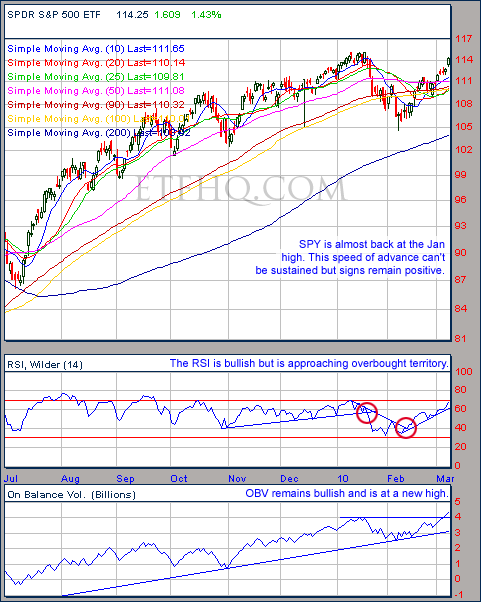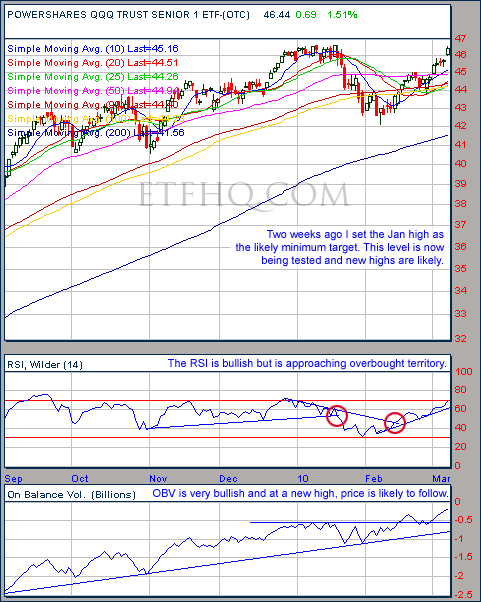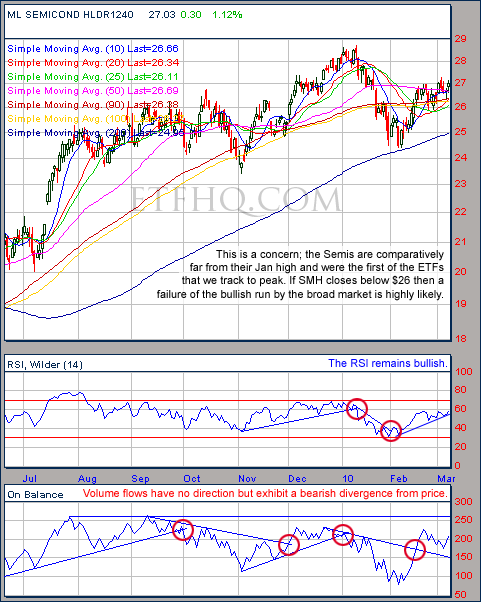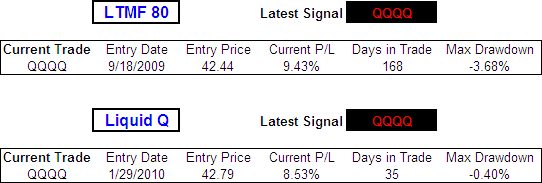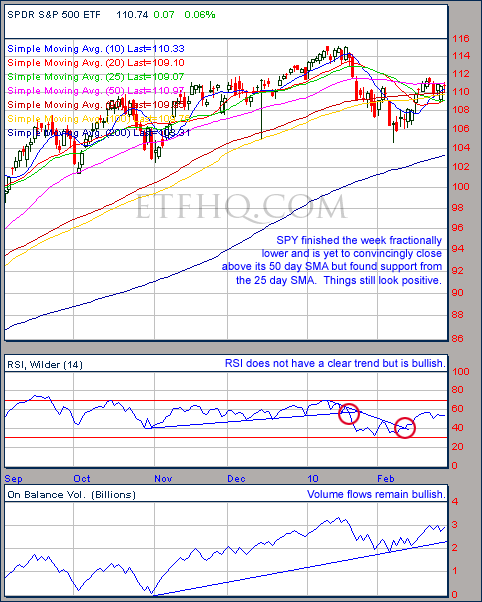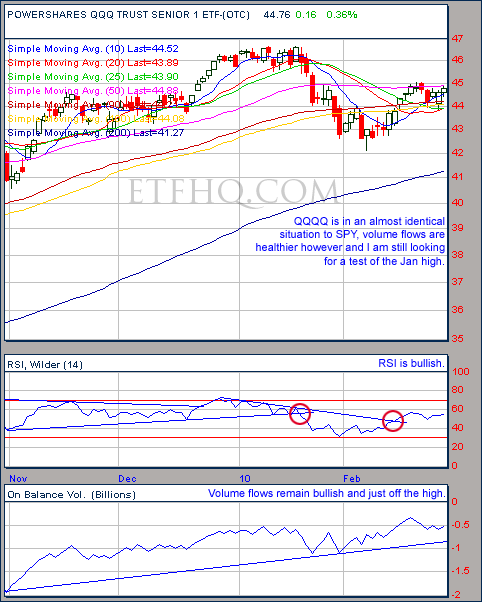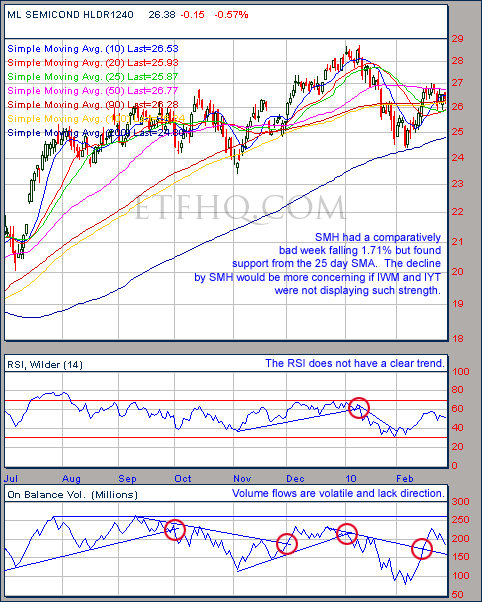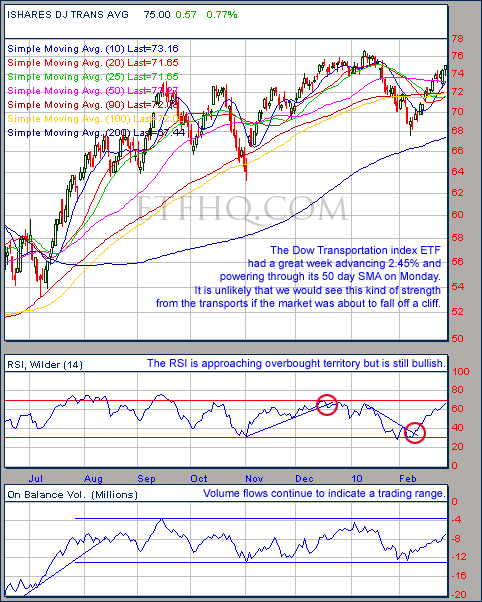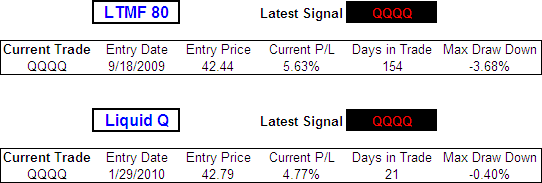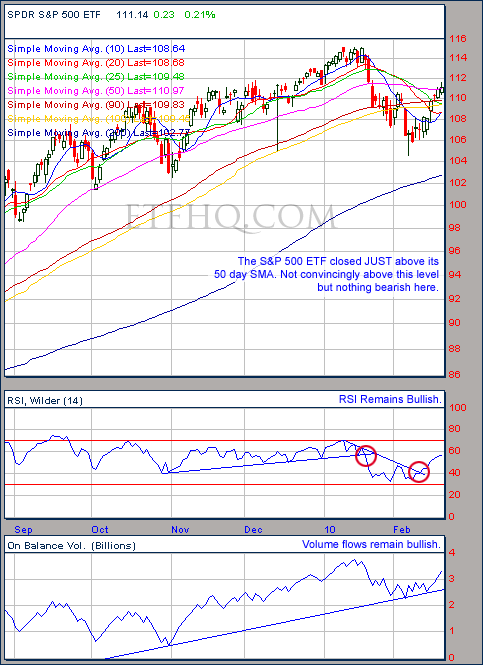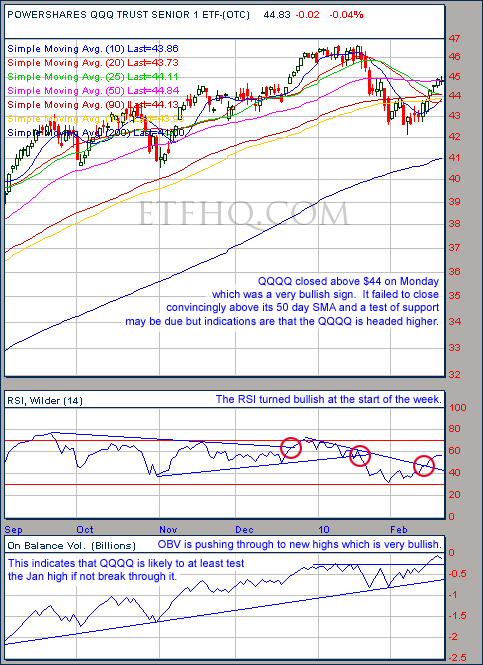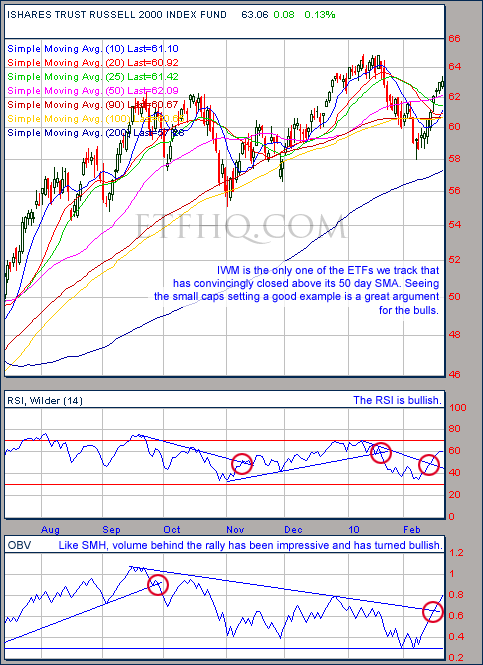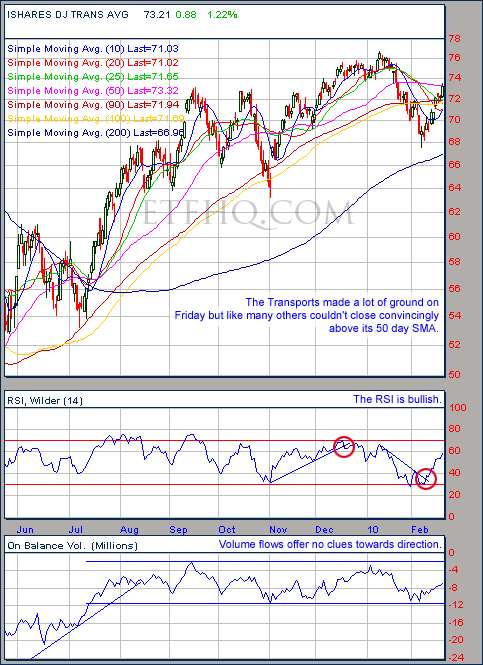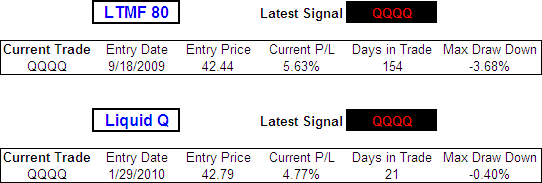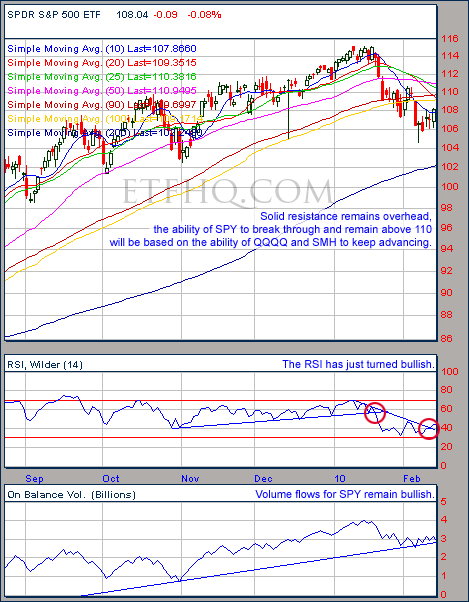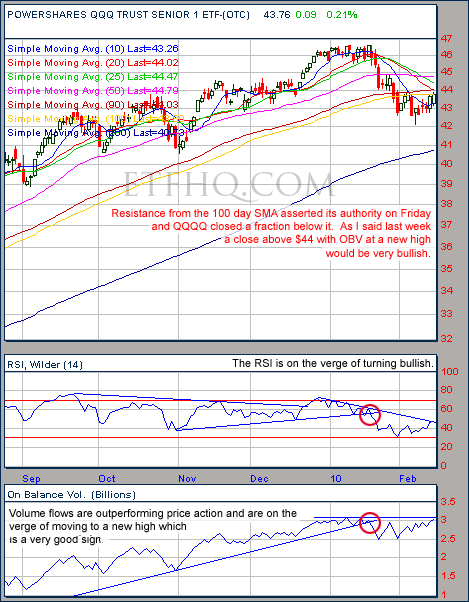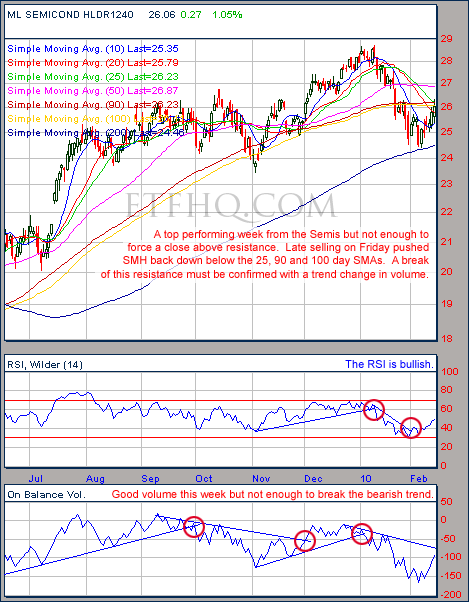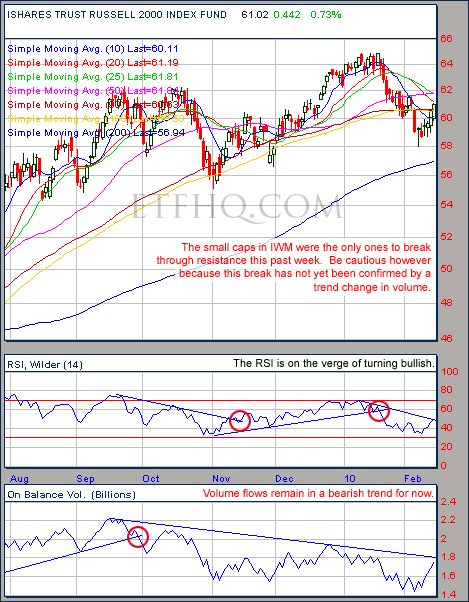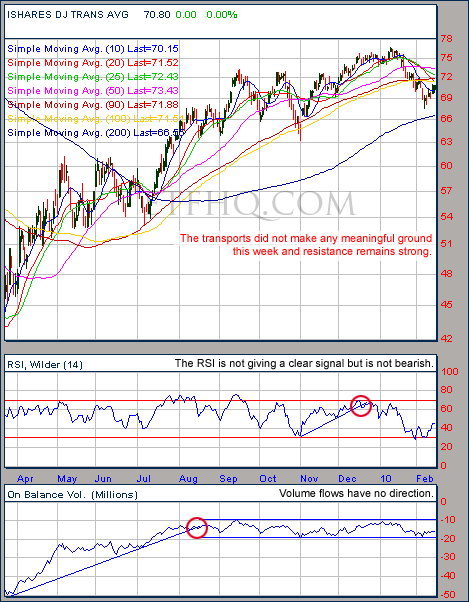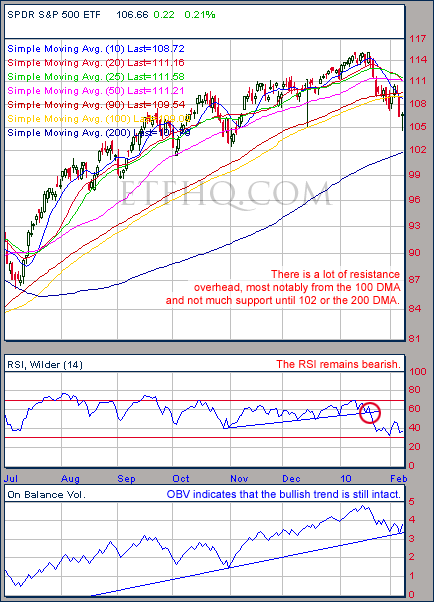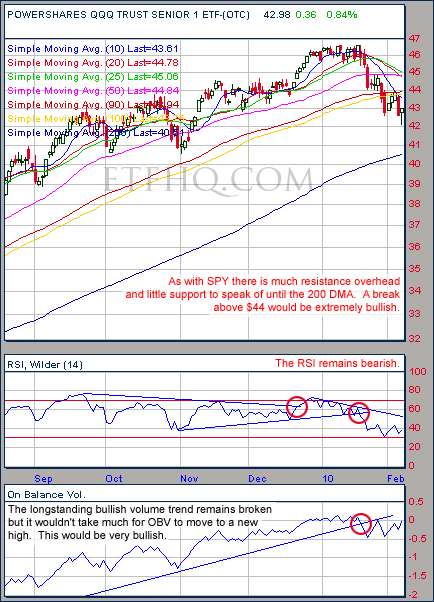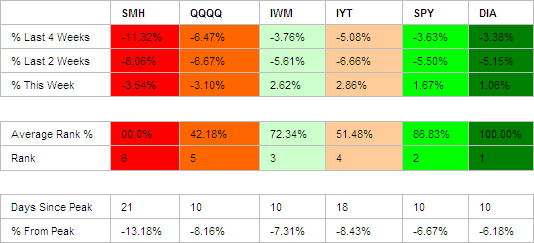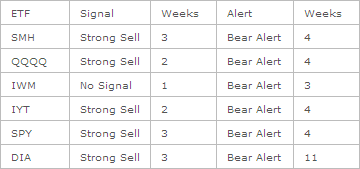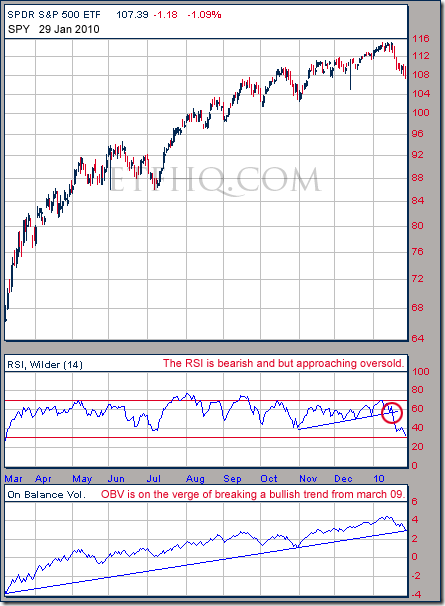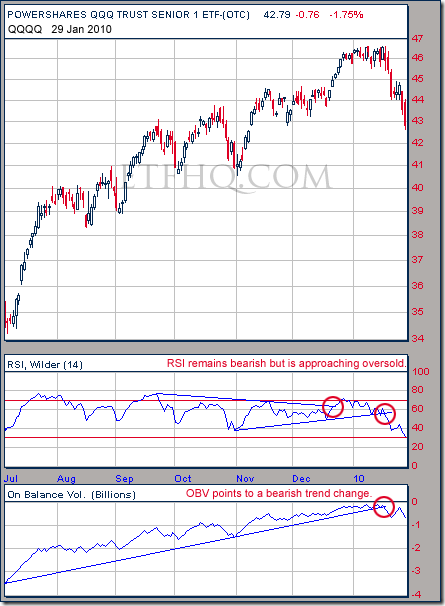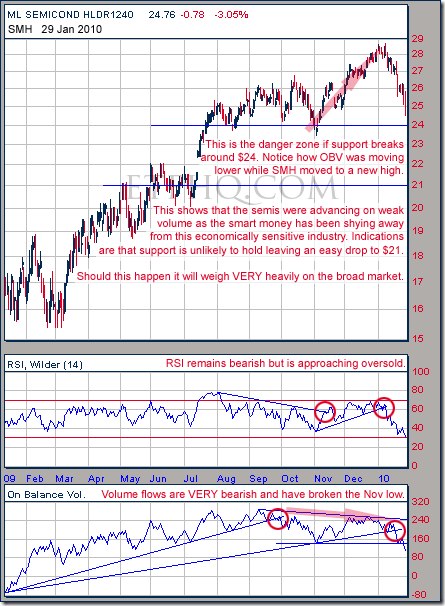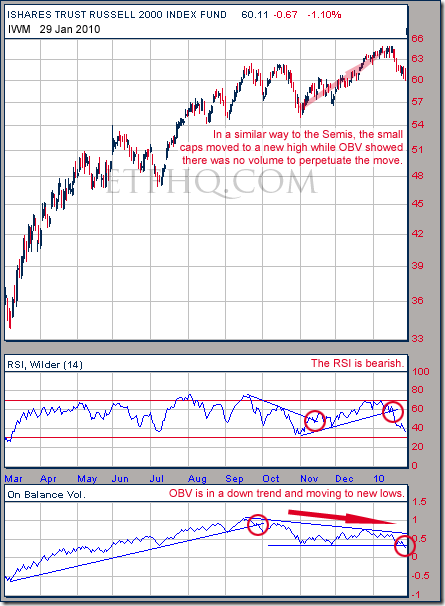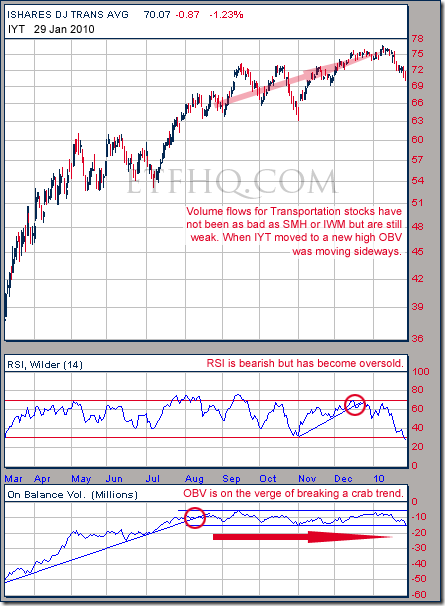March 14, 2010 – 10:00 pm ET
We saw new highs from the broad market over the last week as expected although from a technical stand point not much has changed. Volume flows remain very positive, and there is little negative that can be said except the ongoing concern caused by the under performance of the semiconductors.
It was a busy week at the office for us with the start of a new sector volume research project. While hunting down the data required a friend at SPDRs has gave me month end component data for the S&P Select Sectors back to Sept 2001, let me know if you would like a copy.
.
ETF % Change Comparison
.

IWM (The Russell 2000 – Small Cap ETF) and IYT (Dow Transportation ETF) continued to show great strength and lead the market to new highs. SMH was the only one to decline over the last week and has been the worst performer over all the measured time frames. Unless SMH starts to participate in this rally then the broad market can’t go much further.
.
What the % Comparison Table Tells Us:
By comparing the performance of the economically sensitive (SMH, QQQQ, IWM, IYT) and the comparatively stable ETFs (SPY and DIA) we can get an indication of the true market direction. The more sensitive areas of the market tend to be the first to initiate a trend change. For example if DIA and SPY sell off heavily while SMH and IWM (Russell 2000 small cap ETF) sell of mildly or continue moving to new highs then this would be very positive and vice versa.
The ‘Average Rank %’ is calculated by subtracting the % change for each ETF from the maximum % change and dividing it by the range for each period. 1-((MAX(% change all ETFs)-ETFs % Change)/(MAX(% change all ETFs)-MIN(% change all ETFs))) The readings for each period are then averaged. This reading is provided because if one ETF was significantly under/out performing the others then a plain high or low rank would not accurately reflect this.
.
![]()
.
A Look at the Charts
.
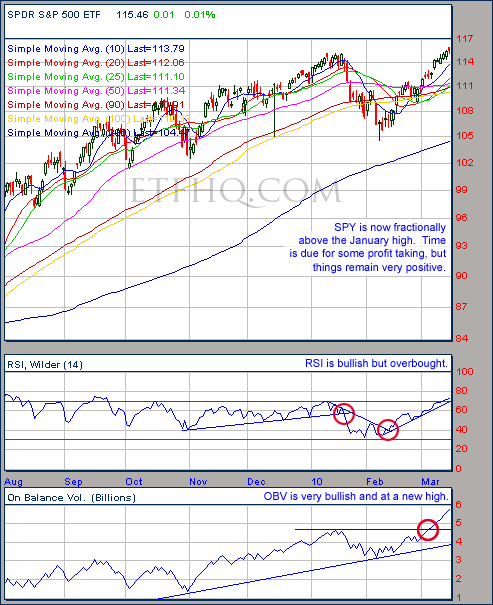
Look at all that volume behind the recent rally, this is great to see and indicates that further advances are on the way. When we do see profit taking, if SPY falls back below the Jan high it will not be a cause for concern as long at SMH holds together.
.
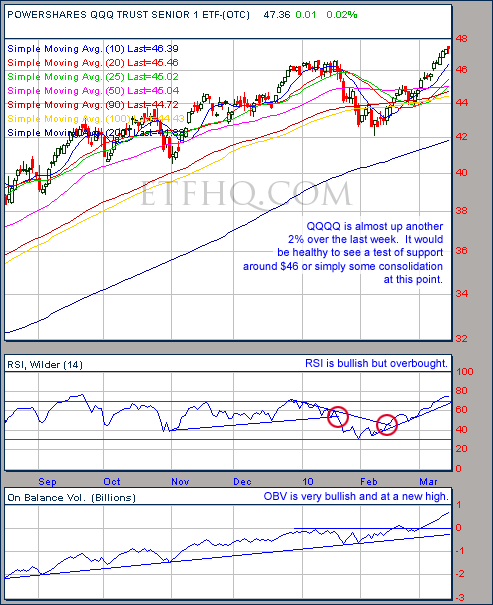
QQQQs holdings are 35% in hardware and the key component for hardware is semiconductors. For this reason it is simply not possible for QQQQ to go far without SMH participating.
.

How this plays out will be very interesting. I have never see a time when everything else has looked so bullish while SMH has been so discouraging. As I said last week SMH must hold onto $26 or risk a test and likely break of the 200 day SMA. If that occurred then the broad market will almost certainly return to a bear market.
.
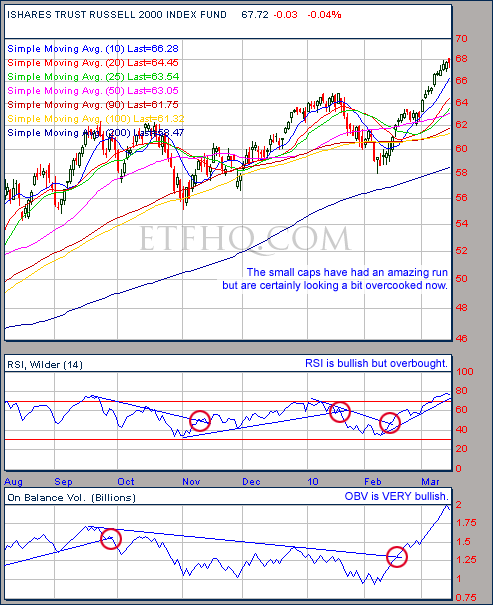
IWM is offering the broad market all the strength that SMH lacks and the performance of the small caps remains the strongest argument for the bulls. It is doubtful that IWM can continue at this pace for another week and it would be far better to see some profit taking or consolidation at this point.
.
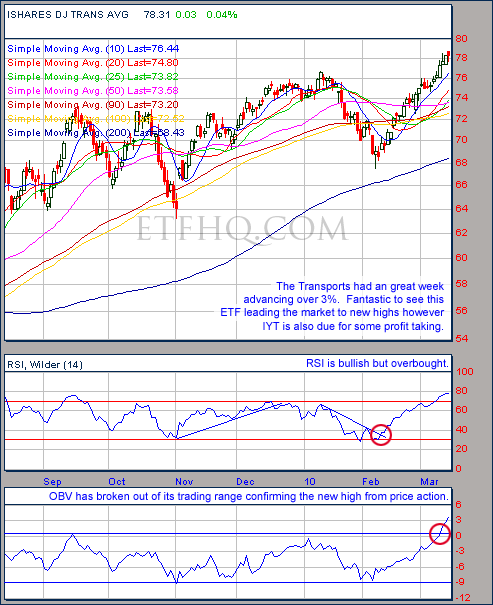
It is great to see the Transports ending the week convincingly above their Jan high. In a weak economy less goods are sold and therefore less goods are transported making it imposable for IYT to perform like this.
.
![]()
.
OM3 Weekly Indicator
.

All signals are bullish here.
.
How to read the OM3 indicator
The OM3 indicator as with most of our models primarily reads price action and volume. The strong/weak buy/sell signals are self-explanatory. ‘No Signal’ means that the component readings are in conflict and cancel each other out.
The alerts let you know if the cycle is speeding up or slowing down, so when you get at ‘Strong Buy, Bear Alert’ for instance it simply means that the criteria for a strong buy is in place but this weeks cycle reading is weaker (or more bearish) than last weeks reading (the same is true in reverse).
The number of weeks that a signal has been repeated is displayed. Historically a ‘Strong Buy’ signal has lasted for an average of 6 weeks and a maximum of 42 weeks, while a ‘Strong Sell’ has lasted for an average of 4 weeks and a maximum of 16.
This is an indicator not a mechanical trading model. It is useful to assist in analyzing the market but for the best results should be combined with commonsense and support/resistance levels etc.
.
![]()
.
TransDow & NasDow
.

This is interesting and unexpected; the Dow has regained dominance over the NASDAQ. Price action would not explain this but the dominance reading for the NASDAQ is taken from volume flows. The Transports remain dominant over the Dow.
.
What the TransDow Readings tell us:
The TransDow measures dominance between the DJ Transportation Index (DJTI) and the Dow Jones Industrial Average (DJIA). In a strong market the more economically sensitive Transportation Index should be dominant over the DJIA.
Historically the DJTI has been dominant over the Dow 45% of the time. The annualized rate of return from the DJTI during this period was 18.47% with the biggest loss for one trade sitting at -13.27%. The annualized return from the DJIA during the periods it was dominant over the DJTI was just 4.06% and the biggest loss for one trade was -16.13%. A 4% stop-loss is applied to all trades adjusting positions only at the end of the week.
What the NasDow Readings tell us:
The NasDow measures dominance between the NASDAQ and the DJIA. Using the same theory behind the Trans Dow; in a strong market the more economically sensitive NASDAQ should be dominant over the DJIA.
Historically the NASDAQ has been dominant over the DJIA 44% of the time. Taking only the trades when the NASDAQ is above its 40 week moving average the annualized rate of return was 25.47% with the biggest loss for one trade sitting at –8.59%. The annualized rate on the DJIA during the periods it was dominant over the NASDAQ is just 8.88% and the biggest loss for one trade was –12.28%. A 8% stop-loss is applied to all trades adjusting positions only at the end of the week.
.
![]()
.
LTMF 80 & Liquid Q
.

LTMF 80 and Liquid Q continue to show open positions in QQQQ.
.
Historical Stats:
.

.
How The LTMF 80 Works
LTMF stands for Long Term Market Forecaster. It reads volume flows relative to price action and looks for out performance of volume measured on a percentage basis over the prior 12 months. During a sustained rally the readings will reach high levels (near 100%) making it imposable for the volume reading to always outperform price so any reading above 80% will maintain the buy signal. This system has outperformed the market over the last 10 years but performance has been damaged by some nasty losses. It only produces buy signals and only for QQQQ.
How Liquid Q Works
Liquid Q completely ignores price action and instead measures the relative flow of money between a selection of economically sensitive and comparatively stable ares of the market. It looks for times when the smart money is confident and and can be seen by through volume investing heavily is more risky areas due to an expectation of expansion. This system has outperformed the market over the last 10 years and remained in cash through most of the major declines. It only produces buy signals and only for QQQQ. We will provide more performance details on the web site for these systems soon.
.
![]()
.
Summary
.
It has been a great run over the last 5 weeks but the further the market goes without profit taking the sharper the eventual pull back will be. It would be a good outcome over the next week to see some profit taking occur and support established. Do keep an eye on SMH as its ability to hold together is imperative for the health of the market.
.
Any disputes, questions, queries, comments or theories are most welcome in the comments section below.
.
Derry
And the Team @ ETF HQ
.
![]()
.
The Devils Dictionary – C, Part 2
.
Counterparty – The name for the other guy or institution in a deal, otherwise known as he who is left holding the bag. If you lend me $10, we are each counterparties to the loan. A committee has been formed to find out why this word is needed.
Credit – Long ago, when she first appeared amongst us, “Lady Credit” was said to be attracted to a person’s character, probity and trustworthiness. With age, she has become less choosy.
Credit Default Swaps – A means for transferring risk. Lenders can now insure against the risk that a borrower goes bankrupt. Instead, they are now exposed to the risk that the seller of default protection, in an unregulated $30 trillion market, goes belly up. Loose translation from the original Latin “ubi mel ibi apes,” or “where there’s honey there are bees.” 1. A complex financial instrument vital to the functioning of a modern economy in the way it spreads risk among consenting parties. (Greenspan, A., pre-Sept. 2008.) 2. A complex financial instrument that nearly destroyed modern capitalism (Greenspan, A., post-Sept. 2008).
Credit Line – A set amount of borrowed money available only to those who don’t need it.
Crisis – A frequently occurring one-in-a-lifetime event, generally deemed impossible by those under the age of 28.

